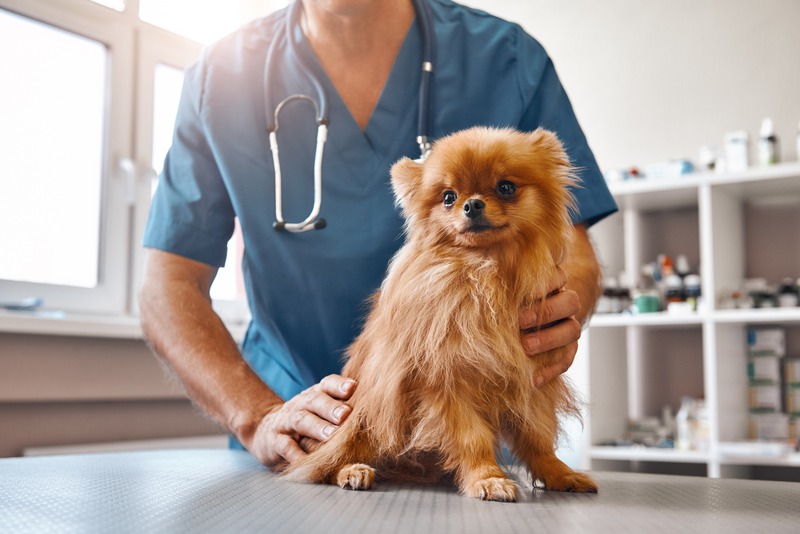As pet owners, our furry friends are often considered part of the family. Their health and well-being matter just as much as any other family member’s. So, when our pets start showing signs of allergies, it can be a cause for concern. Allergies in pets can range from mild irritations to more severe conditions that require medical attention. Understanding when to worry and seek help is crucial in ensuring our pets live happy, healthy lives. Let’s walk through the signs, solutions, and preventative measures for managing pet allergies.
Recognizing the Signs of Allergies in Pets
Just like humans, pets can show various symptoms when they’re suffering from allergies. It’s essential to keep an eye out for these signs, which can include:
-
Consistent scratching or licking
-
Red, inflamed skin
-
Recurring ear infections
-
Runny eyes or nose
-
Sneezing and coughing
-
Vomiting or diarrhea
-
Swelling of the face, ears, lips, eyelids, or earflaps
-
Changes in behavior or mood
What Causes Allergies in Pets?
A variety of factors can trigger allergies in pets. Common allergens include:
-
Pollen, grass, and plants
-
Flea bites
-
Food ingredients (like beef, chicken, or soy)
-
Dust and house mites
-
Mold spores
-
Perfumes and cleaning products
-
Prescription drugs
Finding the source of your pet’s allergies can be a process of elimination, and paying a visit to your vet is often the best first step.
When to Visit the Vet
If your pet is showing signs of allergies, visiting the vet is the best course of action. Persistent symptoms or a sudden onset of severe symptoms definitely warrant a professional examination. A vet can provide a diagnosis and tailor a treatment plan specific to your pet’s needs. Depending on the severity, treatments may range from simple lifestyle adjustments to general surgery for pets if a more serious underlying condition is identified.
Diagnosis and Treatment Options
Your vet will likely recommend certain diagnostic tests to pinpoint the cause of your pet’s allergies. These may include skin or blood tests, elimination diets, or X-rays. Once the allergen is identified, treatment options can include:
-
Medicated shampoos or creams
-
Prescription medications
-
Hypoallergenic foods for dietary allergies
-
Immunotherapy (allergy shots)
-
Simple changes in the home environment
-
Surgical intervention in chronic cases
Dealing with allergies can be a journey, and your vet’s guidance will be invaluable on this path.
Common Pet Allergens and How to Combat Them
Let’s take a closer look at some of the common cat allergies and what we can do to help our feline friends. Cats can be allergic to many of the same things as dogs, including pollen, foods, and dust mites. Signs like excessive grooming, hair loss, and skin lesions can be indicative of an allergic reaction. To combat these allergens, regularly cleaning your home, using air purifiers, and feeding your cat hypoallergenic foods can make a world of difference.
Preventative Measures for Pet Allergies
Preventing allergies often involves some proactive steps:
-
Keep your home clean and free of dust and dander
-
Use hypoallergenic bedding for your pet
-
Avoid exposing your pet to known allergens
-
Regularly bathe and groom your pet using veterinarian-approved products
-
Maintain a healthy diet and weight for your pet
-
Consider using flea preventatives year-round
-
Keep your pet’s living area dry to prevent mold growth
Preventative measures can significantly reduce the frequency and severity of allergy symptoms, making life more comfortable for your pet.
Maintaining Your Pet’s Overall Health
Alongside managing allergies, keeping up with your pet’s general health is crucial. This includes regular check-ups, vaccinations, and dental care. Speaking of which, veterinary dentistry in Monroe, MI, plays a vital role in preventing periodontal disease, which can have a significant impact on your pet’s overall well-being. Remember that a healthy pet is better equipped to manage allergy symptoms and recover from reactions.
Long-Term Management of Pet Allergies
For pets with chronic allergies, long-term management may involve a combination of treatments. This includes ongoing medications, regular vet visits, and perhaps lifelong changes to their environment or diet. The goal is to minimize the allergies’ impact on your pet’s quality of life and keep them as comfortable as possible.
Building an Allergy-Friendly Environment
Finally, creating an allergy-friendly environment is key to your pet’s comfort. This includes:
-
Choosing pet-friendly cleaning products
-
Maintaining air quality in your home with filters and purifiers
-
Designating pet-free zones to reduce exposure to allergens
-
Using allergen-resistant covers on pillows and furniture
Every small step can lead to big improvements in managing your pet’s allergies.
Final Thoughts
Caring for a pet with allergies can be challenging, but our love for them makes every effort worth it. Understanding when to worry about pet allergies is the first step towards ensuring your companion lives content and itch-free life. If you notice signs of discomfort in your pet, don’t hesitate to consult your vet. With the right care and attention, you can manage your pet’s allergies effectively. Always remember that the goal is to keep your four-legged friend as happy and healthy as possible, and with the right approach, allergies don’t have to stand in the way of that.




